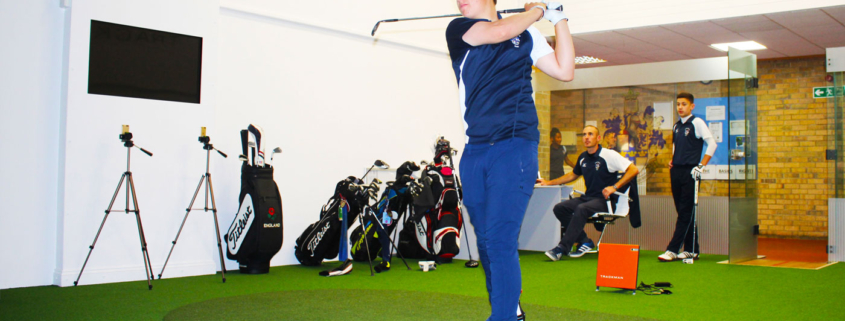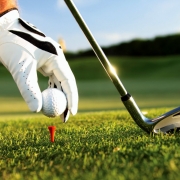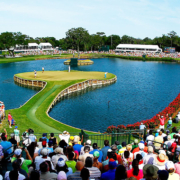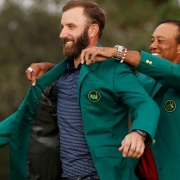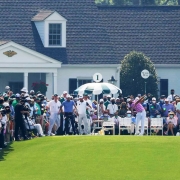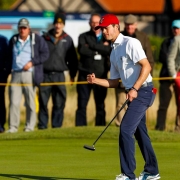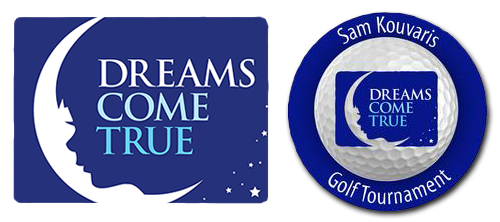Stats Can Make You Better
Each September my brother Gust invites me to play in the fall Member-Guest golf tournament at his club in Detroit. It usually happens near the middle of the month and I’ve always been amused at the conversations we have with our competitors.
It’s one of their final tournaments of the year so much of the banter is about the hockey and bowling leagues that are forming that week. They’re lacing up their skates on Sunday following the final round to get ready for the winter season. Their golf clubs are going in the deep freeze for the cold weather.
Here, we’re on the opposite schedule. It might be the middle of the NFL and the College Football seasons, but most local golfers are also working on their golf games to enjoy the weather over the next nine to ten months
With a six to eight month golf season up north, ours can be year around, especially if you’re willing to play in the heat of July, August and September. They don’t have that option in the snow and cold of much of October through April.
My brother recently won the Senior Championship at his club. So how has he maintained his near scratch status when he has to quit playing half the year because of weather?
These days it’s simple. Technology has allowed us to take the game indoors to small spaces. Players up north can keep their games sharp through data and information.
Two companies, FlightScope and TRACKMAN have developed computer generated data that analyzes your swing, equipment and shot selection and can make you a better player.
“People love the technology,” says former professional golfer John Schroeder who’s the owner and an instructor/fitter at MasterFit Golf in Orange Park. “It makes it so easy for people to understand why the ball flies the way it does.”
Schroeder and MasterFit have been in business for 25 years both on Phillips Highway and in Orange Park. But nothing has accelerated his ability to do his job like the technology explosion. MasterFit was an early adopter of Flight Scope. Fifteen years ago they were the first practice range to have the technology in the state of Florida and have partnered with them ever since.
“There’s a fine line between the artistry of golf and the advancements in technology,” Sea Island Golf Performance Center Manger Craig Allan said from his teaching and fitting spot overlooking the Atlantic Ocean. “We walk very carefully along that fence.”
Sea Island and Allan use TRACKMAN technology developed by a Dutch company that’s been in the swing data business from the beginning.
It used to be that an instructor told you to “keep your head down,” or “get to your left side.” With the modern technology how the equipment performs is part of the equations. Spin rates and launch angles are a big part of the conversation when it comes to the equipment they choose.
“I can push a player toward game improvement technology in clubs but the player has to like the club they’re looking at on good days and bad,” Allan explained.
“We can look at 28 different parameters of your swing and ball flight,” Schroeder, who played college golf at UNF, added. “Ball, flight and swing parameters. Launch, landing, smash factor, spin rate swing speed, angle of attack, club path, face to path they all are invaluable from a teaching standpoint.”
Instruction has come a long way even from the time when a video camera and a radar gun seemed advanced. While the technology can help instructors improve your golf game, it can also match your game with the right equipment.
“We’re building a shaft that matches your swing speed,” Schroeder said. “You want to get your driver from 50 feet to 80 feet in the air? We can measure the data, we know what different shafts can do so we match those two things up.”
With over 40,000 shafts to choose from onsite at their 8,000 square foot facility on Wells Road, Schroeder says the data from FlightScope and watching your swing allows him to improve your game almost instantly.
“We’re looking at launch, spin and landing angle when it comes to optimizing your ball flight. FlightScope measures the shaft how it’s loading and unloading. That helps me build a shaft for you.”
With the right equipment in your hands, you can be a better player. It also allows instructors to develop your game the way you play it.
“Much easier,” Schroeder said when asked if his job as an instructor has gotten easier or more complicated.
“We’re not going to focus on all 28 data points. We’ll focus on one or two and when people see that, they can understand it much easier. ‘Why did I slice it 30 yards to the right?’ It shows your clubface was 13 degrees open at impact. And that’s easy to understand.”
Allan said he and tries not to rely just on the equipment to make better players. The combination of the “hands-on” traditional instruction combined with the technology takes learning the game to a new level with the right equipment.
“Some great players have gotten away from the artistry of the game and relying on technology,” Allan said about the blend he tries to use in his work. “But it’ll always remain a game that relies on feel and athleticism. We’re just trying to enhance that.”

